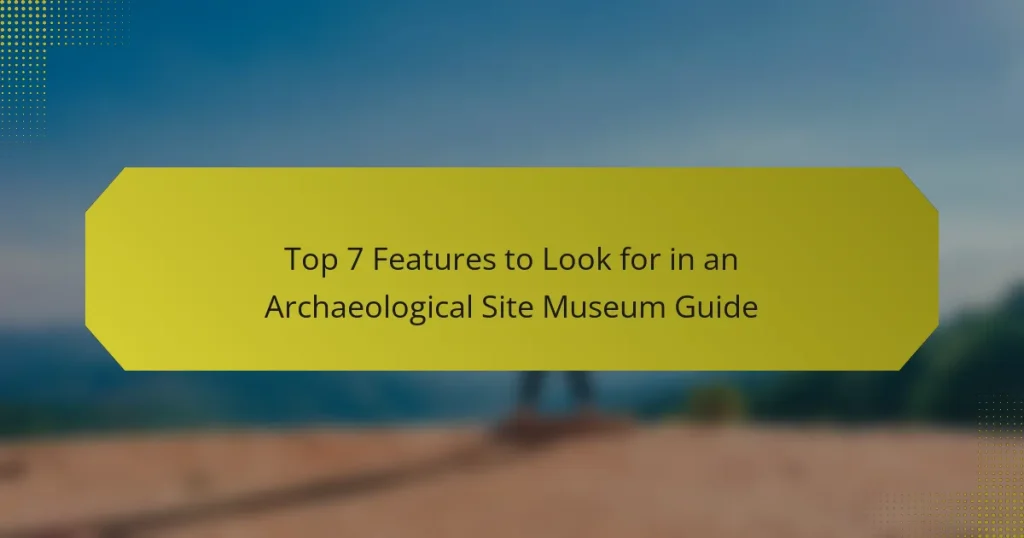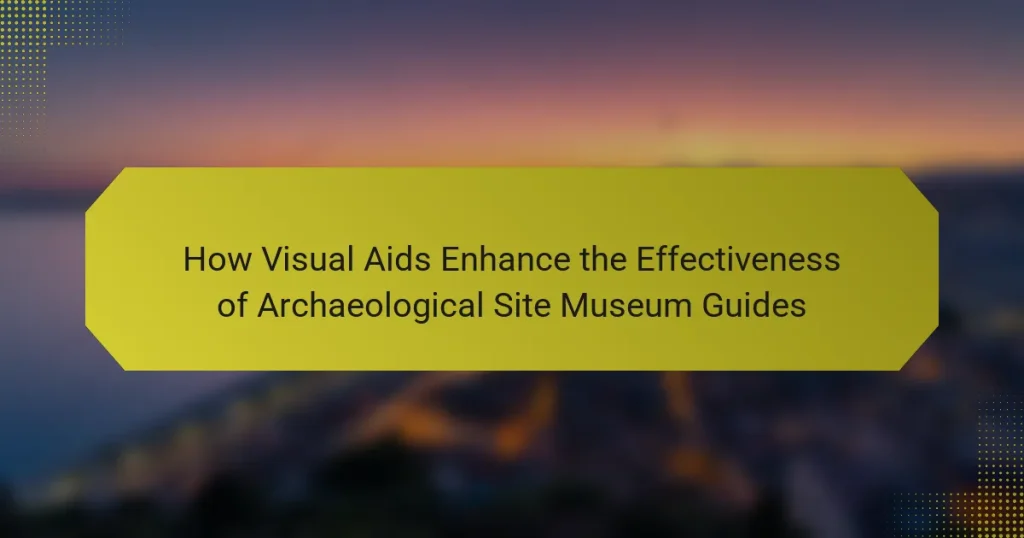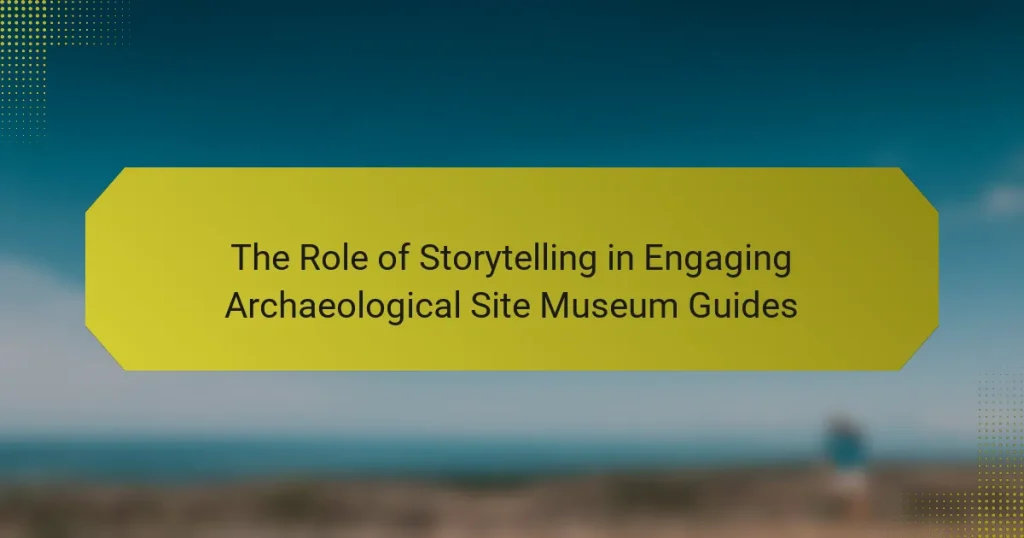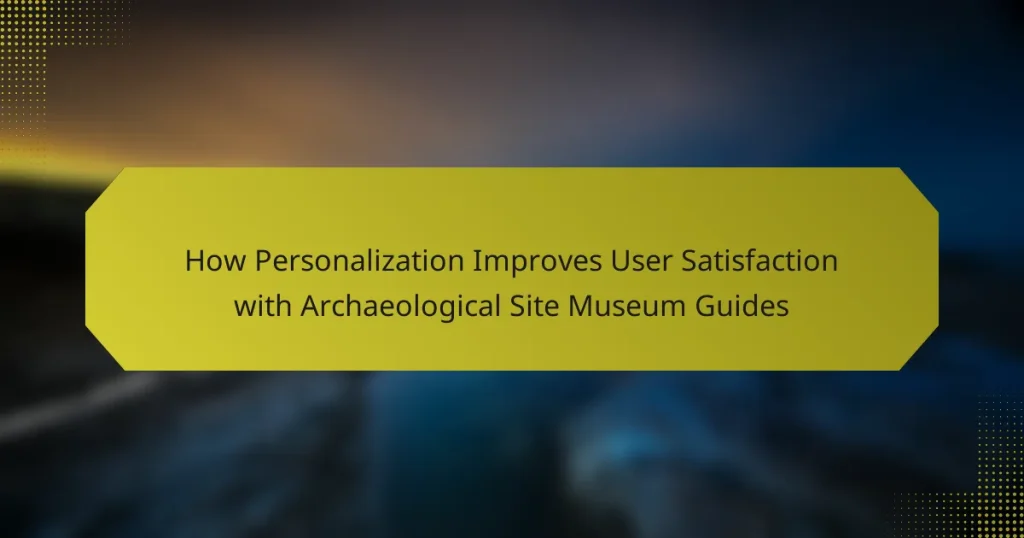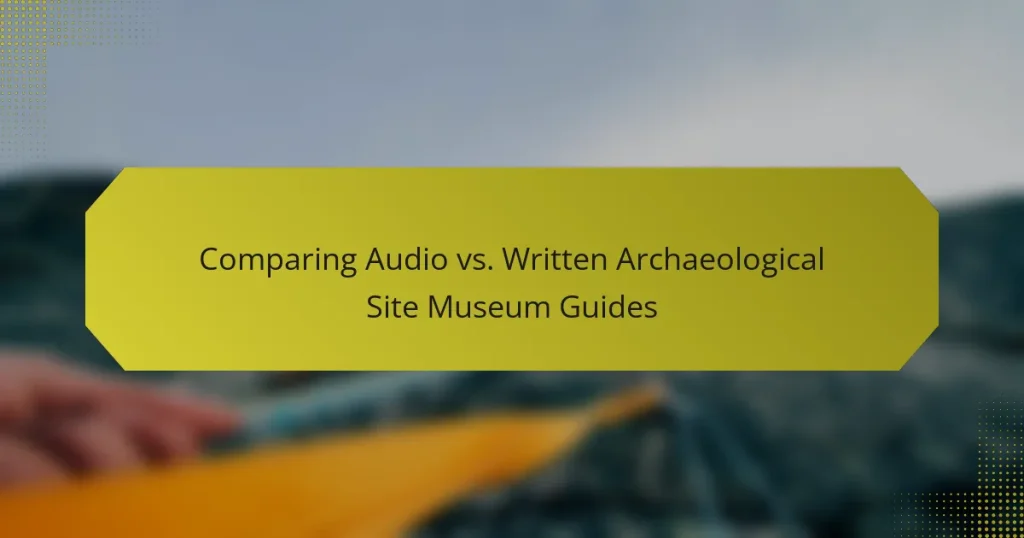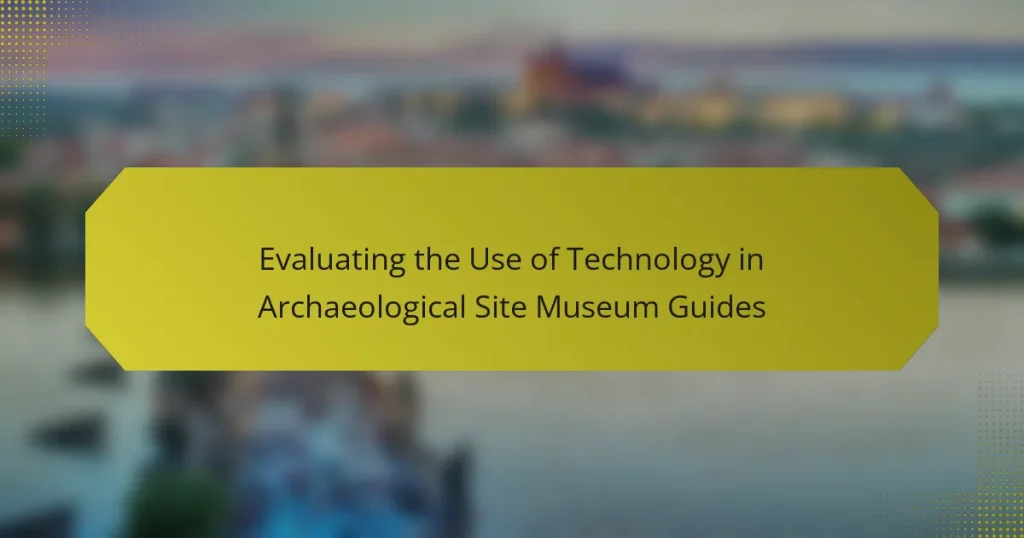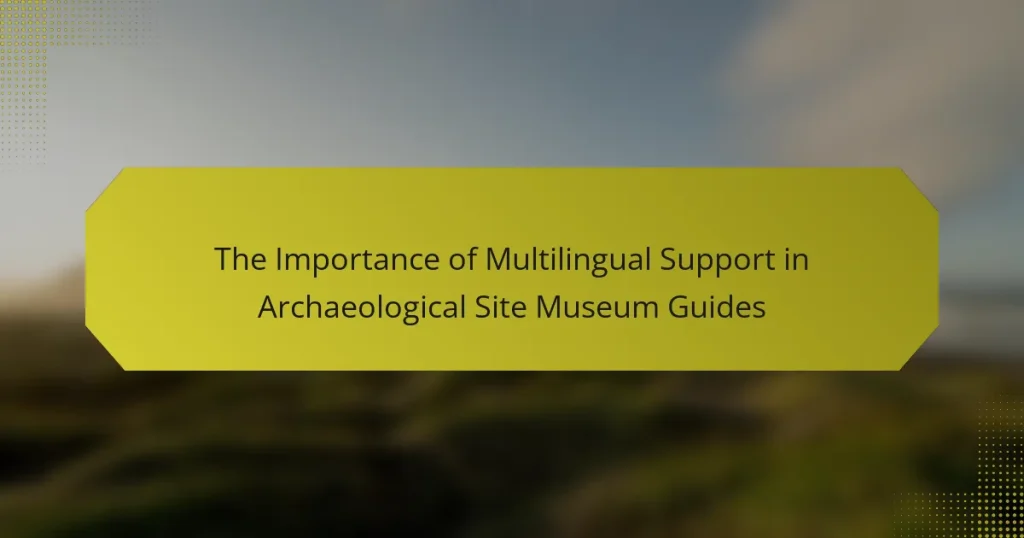Effective archaeological site museum guides play a vital role in enhancing visitor engagement and education through interactive and informative features. By offering hands-on experiences and expert-led tours, these guides create memorable connections to the site’s history, fostering a deeper appreciation and understanding of the artifacts and their significance.
How Visual Aids Enhance the Effectiveness of Archaeological Site Museum Guides
The Role of Storytelling in Engaging Archaeological Site Museum Guides
How Personalization Improves User Satisfaction with Archaeological Site Museum Guides
Comparing Audio vs. Written Archaeological Site Museum Guides
Evaluating the Use of Technology in Archaeological Site Museum Guides
The Importance of Multilingual Support in Archaeological Site Museum Guides
What are the effective features of archaeological site museum guides?
Effective archaeological site museum guides enhance visitor engagement and education through various interactive and informative features. These elements help to create a memorable experience while providing valuable insights into the site’s history and significance.
Interactive exhibits
Interactive exhibits allow visitors to engage directly with artifacts and displays, fostering a deeper understanding of the archaeological context. These might include touch screens, hands-on activities, or virtual reconstructions that encourage exploration and learning.
For example, a digital interface might let visitors piece together ancient pottery or simulate excavation techniques. Such experiences can significantly increase visitor retention and enjoyment, making the learning process more dynamic.
Expert-led tours
Expert-led tours provide in-depth knowledge and context that self-guided experiences often lack. These tours are typically conducted by archaeologists or historians who can share unique insights and answer questions, enhancing the educational value of the visit.
Consider scheduling tours at various times to accommodate different visitor groups. Small group sizes can facilitate better interaction and personalized attention, ensuring that participants gain a richer understanding of the site.
Multilingual support
Multilingual support is crucial for accommodating diverse visitor demographics. Offering guides, signage, and audio tours in multiple languages ensures that non-native speakers can fully appreciate the site’s offerings.
Implementing this feature can involve translating materials into the most common languages spoken by visitors. This approach not only enhances accessibility but also promotes inclusivity, allowing a broader audience to engage with the site.
Augmented reality experiences
Augmented reality (AR) experiences can transform how visitors interact with archaeological sites by overlaying digital information onto the physical environment. Using smartphones or AR glasses, visitors can visualize reconstructions of ancient structures or see artifacts in their original context.
These experiences can be particularly effective in highlighting changes over time, helping visitors understand the evolution of the site. Investing in AR technology can significantly enhance the visitor experience, making it more immersive and informative.
Educational workshops
Educational workshops provide hands-on learning opportunities that deepen visitors’ understanding of archaeology and related fields. These sessions can cover topics such as artifact preservation, excavation techniques, or cultural history.
Workshops can be tailored for different age groups and skill levels, ensuring that they are engaging for everyone from school children to adults. Offering these programs regularly can foster a community of learners and encourage repeat visits to the site.
How do interactive exhibits enhance visitor engagement?
Interactive exhibits significantly enhance visitor engagement by allowing participants to actively involve themselves in the learning process. These hands-on experiences create memorable connections to the material, making it more likely that visitors will retain information and develop a deeper appreciation for the archaeological site.
Hands-on learning opportunities
Hands-on learning opportunities allow visitors to physically interact with artifacts or simulations, fostering a more immersive experience. For example, a museum might offer replica tools for visitors to use, enabling them to understand ancient techniques firsthand. This type of engagement can lead to increased interest and curiosity about the site’s history.
To maximize the effectiveness of hands-on exhibits, museums should ensure that activities are age-appropriate and accessible to all visitors. Clear instructions and safety guidelines should be provided to enhance the learning experience while minimizing risks.
Real-time feedback mechanisms
Real-time feedback mechanisms enhance visitor engagement by providing immediate responses to their actions, which can reinforce learning. For instance, interactive screens that display information based on user choices can help visitors understand the significance of their interactions. This instant feedback can motivate visitors to explore further and ask questions.
When implementing real-time feedback, museums should consider using technology that is user-friendly and intuitive. Additionally, integrating gamification elements, such as points or rewards for participation, can further encourage engagement and make the learning experience enjoyable.
What role do expert-led tours play in archaeological site museums?
Expert-led tours are crucial in archaeological site museums as they provide visitors with insights that enhance their understanding of artifacts and historical contexts. These tours often feature knowledgeable guides who can answer questions and share stories that bring the exhibits to life.
In-depth knowledge sharing
Expert guides possess extensive knowledge about the archaeological site and its artifacts, which allows them to convey complex information in an accessible manner. They can explain the significance of items, the methods used in excavations, and the cultural context of the findings. This depth of knowledge transforms a standard visit into an educational experience.
For example, a guide might discuss the techniques used by ancient civilizations to create tools, providing visitors with a clearer understanding of the technological advancements of the time. This kind of detailed information is often not available through written materials alone.
Personalized visitor experiences
Expert-led tours offer personalized experiences that cater to the interests and questions of the visitors. Guides can adapt their narratives based on the audience’s background, ensuring that everyone finds the tour engaging and relevant. This adaptability can significantly enhance visitor satisfaction.
Additionally, guides can facilitate discussions and encourage questions, making the experience interactive. For instance, if a visitor expresses interest in a particular artifact, the guide can delve deeper into that topic, creating a more memorable and impactful visit.
How does multilingual support improve accessibility?
Multilingual support enhances accessibility by allowing diverse audiences to engage with archaeological site museums in their preferred languages. This feature ensures that non-native speakers can fully understand and appreciate the exhibits, fostering a more inclusive environment.
Broader audience reach
By offering information in multiple languages, archaeological site museums can attract a wider range of visitors. This includes tourists from various countries and local communities with different linguistic backgrounds. For example, providing guides in English, Spanish, and Mandarin can significantly increase visitor numbers.
To effectively implement multilingual support, museums should prioritize the most commonly spoken languages in their area. Conducting surveys or analyzing visitor demographics can help identify which languages to include, ensuring that resources are allocated efficiently.
Cultural inclusivity
Multilingual guides promote cultural inclusivity by recognizing and respecting the diverse backgrounds of visitors. This approach not only enhances the visitor experience but also encourages cultural exchange and understanding. When people can connect with the content in their native language, they are more likely to engage deeply with the material.
Museums should consider collaborating with local cultural organizations to ensure that translations are accurate and culturally relevant. Additionally, incorporating local dialects or indigenous languages can further enrich the experience and demonstrate a commitment to honoring all cultures represented in the museum’s narrative.
What are the benefits of augmented reality experiences?
Augmented reality (AR) experiences enhance archaeological site museum guides by providing interactive and engaging ways to visualize historical contexts. These experiences can bring artifacts to life, allowing visitors to see reconstructions or animations that deepen their understanding of the site.
Enhanced storytelling
Augmented reality significantly improves storytelling by integrating visual and auditory elements that convey narratives more effectively. For instance, visitors can point their devices at a specific artifact and see a short video or animation that explains its historical significance, creating a richer context.
By combining text, images, and sound, AR can evoke emotions and create memorable experiences. This multi-sensory approach helps visitors connect with the past in a way that traditional guides cannot, making the stories of ancient civilizations more relatable and engaging.
Immersive learning environments
AR fosters immersive learning environments that encourage active participation. Visitors can engage with 3D models of artifacts, explore reconstructions of ancient buildings, or even participate in virtual excavations, which enhances their understanding of archaeological methods and findings.
These interactive experiences cater to various learning styles, making it easier for individuals to absorb information. For example, visual learners benefit from seeing artifacts in context, while kinesthetic learners enjoy manipulating virtual objects. This adaptability makes AR a powerful tool for education in archaeological settings.
What educational workshops are commonly offered?
Educational workshops at archaeological site museums typically include a variety of hands-on experiences designed to enhance understanding of archaeology and cultural heritage. These workshops often focus on practical skills, such as artifact handling and preservation techniques, aimed at engaging participants of all ages.
Artifact handling sessions
Artifact handling sessions provide participants with the opportunity to learn how to properly handle and care for archaeological finds. These sessions emphasize the importance of preservation and the techniques required to maintain the integrity of artifacts.
During these workshops, participants may practice handling replicas or, in some cases, actual artifacts under supervision. Key considerations include using gloves, understanding weight distribution, and recognizing the fragility of different materials.
To maximize the learning experience, museums often limit the number of participants in these sessions, ensuring that each individual receives adequate attention and guidance. It’s advisable to check in advance for any specific requirements or restrictions, such as age limits or prior knowledge expectations.
